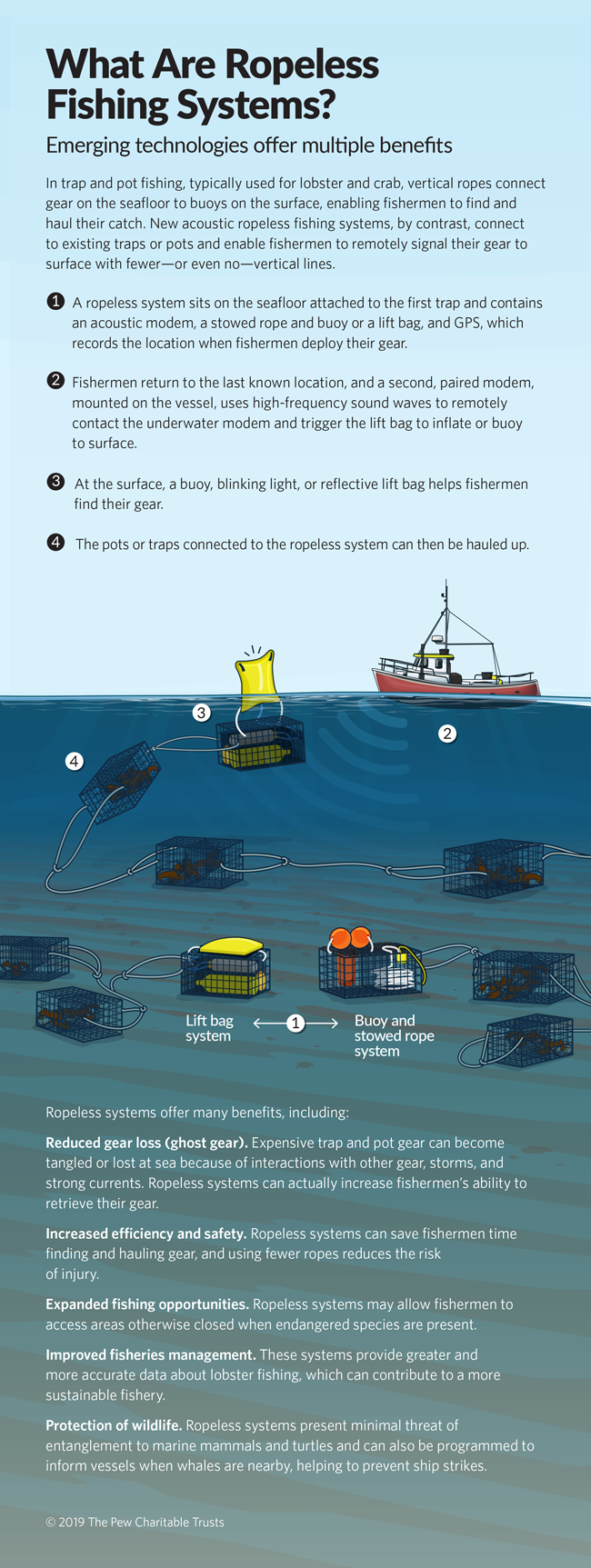Ropeless Fishing Systems Offer Solutions for Both Fishermen and Marine Life
New technologies would reduce the amount of line in the water
In the United States, Canada, and around the world, technological advances have created alternative fishing gears that can benefit both fishermen and the marine ecosystem. Along the East Coast of the U.S. and Canada, experts are developing and testing ropeless systems that federal managers may soon approve for commercial lobster trap and crab pot fishing.
Ropeless fishing systems attach to the first trap or pot in a series of connected traps on the seafloor. As fishermen approach their gear, they can send a remote signal to trigger the system to release a lift bag or buoy, allowing the traps to be hauled up and emptied efficiently. The primary purpose of these new fishing systems is to eliminate or reduce the number of “vertical lines,” or ropes that sit stationary in the water, connecting traps or pots on the seafloor to buoys at the water’s surface. The systems also have potential benefits to fishermen and managers, including reduced gear loss and increased safety.
The Pew Charitable Trusts joins the growing number of scientists, engineers, fishermen, and fishery managers in supporting the development of ropeless fishing systems, which represent a promising solution for the pressing problem affecting the North Atlantic right whale: entanglement in fishing gear. With collaboration and commitment from fishermen and decision-makers, these endangered whales and fishing cultures in the U.S. and Canada, can thrive far into the future.
Peter Baker is a project director and Leah Baumwell is a senior associate with The Pew Charitable Trusts’ campaign to protect Atlantic Ocean marine life off the U.S. and Canada.













